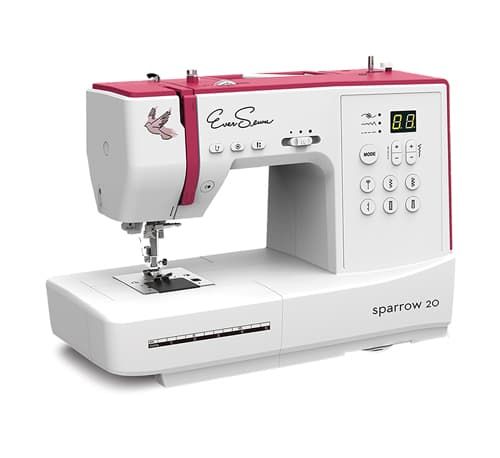10 Tips for Paper Piecing

Ready to give paper piecing a try? Paper (foundation) piecing has been around for hundreds of years. Sometimes you can still find antique quilts with the papers left inside. Even quilters back then knew that using a foundation adds stability and precision to your piecing. Here are some tips for success!
- Make paper copies of the foundation, or transfer the design onto scrap fabric or muslin by tracing. Newsprint or photocopy paper work just fine.
- Make all photocopies at the same time, if possible. Photocopiers can distort the image to some degree, and that’s okay, but to minimize this distortion, always photocopy from the same original.

- Small stitches are important. Set your stitch length to 2.0mm and use a 90/14 needle. The combination of larger needle and small stitch length will make removing the papers easier.

- Go big! Fabric should be cut at least 1″ larger than the area you are trying to cover. It does not have to be cut to the right shape, just larger than you need. You’ll see our suggested patch sizes listed right on the foundation pattern.
- Let the light shine through. Lay paper pattern right side up on your surface to audition fabric over the sections and hold your paper pattern up to the light to make sure fabric is in the correct spot and will cover the area.
- Yes, it’s upside down and backwards. You will place your first piece of fabric right side up on the wrong side of your foundation pattern. It seems backwards, but this is how you can see where to line up your fabrics. Use a pin or temporary glue stick to hold this first piece in place.

- Set yourself up for success. There is a lot of pressing and trimming when you paper piece. Set up a cutting mat and ironing surface next to your sewing machine so you don’t have to get up and down from your machine as much.

- Pass the test. Cut, sew and make a test foundation to be sure your fabric patches are the correct size and it all comes together properly. You’ll save yourself a major headache!

- Keep going! Sew a few stitches past the end of the line. This will ensure that everything will be secure in the seam allowances and you’ll have nice points.
- Handle with care. When removing the paper, work from the outside in. Gently pull the paper off along the perforation so you don’t pull on your stitches or the fabric. Some quilters remove the papers before they sew sections or blocks together, others do so after the entire quilt is completely assembled. Either is acceptable and entirely up to you!
Check out all of our beginner resources here and happy paper piecing!

Join the Conversation!